Journal Description
Electronic Materials
Electronic Materials
is an international, peer-reviewed, open access journal on fundamental science, engineering, and practical applications of electronic materials published quarterly online by MDPI.
- Open Access— free for readers, with article processing charges (APC) paid by authors or their institutions.
- High Visibility: indexed within Scopus and other databases.
- Rapid Publication: manuscripts are peer-reviewed and a first decision is provided to authors approximately 17 days after submission; acceptance to publication is undertaken in 1.4 days (median values for papers published in this journal in the second half of 2023).
- Recognition of Reviewers: APC discount vouchers, optional signed peer review, and reviewer names published annually in the journal.
- Electronic Materials is a companion journal of Materials.
Latest Articles
Solution-Processable and Eco-Friendly Functionalization of Conductive Silver Nanoparticles Inks for Printable Electronics
Electron. Mater. 2024, 5(2), 45-55; https://doi.org/10.3390/electronicmat5020004 - 16 Apr 2024
Abstract
►
Show Figures
The functionalization of conductive inks has been carried out through the decomposition of hydrogen peroxide (H2O2) onto the surface of silver nanoparticles (AgNPs). The ink prepared using this eco-friendly chemical reagent has been characterized structurally, chemically, and morphologically, showing
[...] Read more.
The functionalization of conductive inks has been carried out through the decomposition of hydrogen peroxide (H2O2) onto the surface of silver nanoparticles (AgNPs). The ink prepared using this eco-friendly chemical reagent has been characterized structurally, chemically, and morphologically, showing the presence of stable AgNPs with suitable properties as well as the absence of residual contamination. The electrical conductivity of such a solution-processable ink is evidenced for patterns designed on flexible photographic paper substrates, using a refillable fountain pen that is implemented as a printing mechanism for the fabrication of simple printed circuit boards (PCBs). The functionality and durability of the tested systems are demonstrated under various mechanical constraints, aiming to basically reproduce the normal operation conditions of flexible electronic devices. The obtained results indicate that the implementation of these AgNP-based inks is relevant for direct applications in inkjet printing technology, thus paving the way for the use of greener chemicals in ink preparation.
Full article
Open AccessArticle
Enhancement of Photo-Electrical Properties of CdS Thin Films: Effect of N2 Purging and N2 Annealing
by
Gayan K. L. Sankalpa, Gayan R. K. K. G. R. Kumarasinghe, Buddhika S. Dassanayake and Gayan W. C. Kumarage
Electron. Mater. 2024, 5(1), 30-44; https://doi.org/10.3390/electronicmat5010003 - 13 Mar 2024
Abstract
The impact of N2 purging in the CdS deposition bath and subsequent N2 annealing is examined and contrasted with conventional CdS films, which were deposited without purging and annealed in ambient air. All films were fabricated using the chemical bath deposition
[...] Read more.
The impact of N2 purging in the CdS deposition bath and subsequent N2 annealing is examined and contrasted with conventional CdS films, which were deposited without purging and annealed in ambient air. All films were fabricated using the chemical bath deposition method at a temperature of 80 °C on fluorine-doped tin oxide glass slides (FTO). N2 purged films were deposited by introducing nitrogen gas into the deposition bath throughout the CdS deposition process. Subsequently, both N2 purged and un-purged films underwent annealing at temperatures ranging from 100 to 500 °C for one hour, either in a nitrogen or ambient air environment. Photoelectrochemical (PEC) cell studies reveal that films subjected to both N2 purging and N2 annealing exhibit a notable enhancement of 37.5% and 27% in ISC (short-circuit current) and VOC (open-circuit voltage) values, accompanied by a 5% improvement in optical transmittance compared to conventional CdS thin films. The films annealed at 300 °C demonstrate the highest ISC, VOC, and VFB values, 55 μA, 0.475 V, and −675 mV, respectively. The improved optoelectrical properties in both N2-purged and N2-annealed films are attributed to their well-packed structure, enhanced interconnectivity, and a higher sulfur to cadmium ratio of 0.76 in the films.
Full article
(This article belongs to the Topic Optoelectronic Materials, 2nd Volume)
►▼
Show Figures

Figure 1
Open AccessArticle
Insulator Metal Transition-Based Selector in Crossbar Memory Arrays
by
Mahmoud Darwish and László Pohl
Electron. Mater. 2024, 5(1), 17-29; https://doi.org/10.3390/electronicmat5010002 - 23 Feb 2024
Abstract
►▼
Show Figures
This article investigates resistive random access memory (ReRAM) crossbar memory arrays, which is a notable development in non-volatile memory technology. We highlight ReRAM’s competitive edge over NAND, NOR Flash, and phase-change memory (PCM), particularly in terms of endurance, speed, and energy efficiency. This
[...] Read more.
This article investigates resistive random access memory (ReRAM) crossbar memory arrays, which is a notable development in non-volatile memory technology. We highlight ReRAM’s competitive edge over NAND, NOR Flash, and phase-change memory (PCM), particularly in terms of endurance, speed, and energy efficiency. This paper focuses on the architecture of crossbar arrays, where memristive devices are positioned at intersecting metal wires. We emphasize the unique resistive switching mechanisms of memristors and the challenges of sneak path currents and delve into the roles and configurations of selectors, particularly focusing on the one-selector one-resistor (1S1R) architecture with an insulator–metal transition (IMT) based selector. We use SPICE simulations based on defined models to examine a 3 × 3 1S1R ReRAM array with vanadium dioxide selectors and titanium dioxide film memristors, assessing the impact of ambient temperature and critical IMT temperatures on array performance. We highlight the operational regions of low resistive state (LRS) and high resistive state (HRS), providing insights into the electrical behavior of these components under various conditions. Lastly, we demonstrate the impact of selector presence on sneak path currents. This research contributes to the overall understanding of ReRAM crossbar arrays integrated with IMT material-based selectors.
Full article
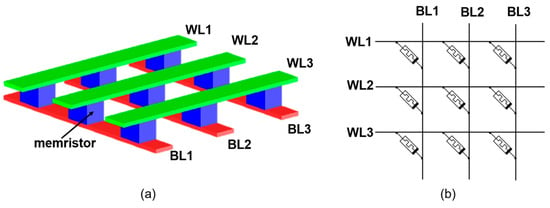
Figure 1
Open AccessArticle
Nanogranular Strontium Ferromolybdate/Strontium Molybdate Ceramics—A Magnetic Material Possessing a Natural Core-Shell Structure
by
Gunnar Suchaneck, Evgenii Artiukh, Nikolay Kalanda, Marta Yarmolich and Gerald Gerlach
Electron. Mater. 2024, 5(1), 1-16; https://doi.org/10.3390/electronicmat5010001 - 31 Jan 2024
Abstract
►▼
Show Figures
In this work, we demonstrate the preparation of easy-to-fabricate nanogranular strontium ferromolybdate/strontium molybdate core-shell ceramics and examine their properties, including tunnel magnetoresistance, magnetic field sensitivity, and temperature coefficient of the tunnel magnetoresistance. The tunnel magnetoresistance of nanogranular strontium ferromolybdate/strontium molybdate core-shell ceramics was
[...] Read more.
In this work, we demonstrate the preparation of easy-to-fabricate nanogranular strontium ferromolybdate/strontium molybdate core-shell ceramics and examine their properties, including tunnel magnetoresistance, magnetic field sensitivity, and temperature coefficient of the tunnel magnetoresistance. The tunnel magnetoresistance of nanogranular strontium ferromolybdate/strontium molybdate core-shell ceramics was modeled, yielding values suitable for magnetoresistive sensor applications. Such structures possess a narrow peak of magnetic flux sensibility located at about 80 mT. For magnetic flux measurement, single-domain granules with superparamagnetic behavior should be applied. The predicted TMR magnetic flux sensitivities for granules with superparamagnetic behavior amount to about 7.7% T−1 and 1.5% T−1 for granule sizes of 3 nm and 5 nm, respectively. A drawback of the tunnel magnetoresistance of such nanogranular core-shell ceramics is the unacceptably large value of the temperature coefficient. Acceptable values, lower than 2% K−1, are obtained only at low temperatures (less than 100 K) or large magnetic flux densities (exceeding 6 T). Therefore, a Wheatstone bridge configuration should be adopted for magnetoresistive sensor design to compensate for the effect of temperature.
Full article

Figure 1
Open AccessArticle
Functionalized Thermoplastic Polyurethane Nanofibers: An Innovative Triboelectric Energy Generator
by
Julia Isidora Salas, Diego de Leon, Sk Shamim Hasan Abir, M. Jasim Uddin and Karen Lozano
Electron. Mater. 2023, 4(4), 158-167; https://doi.org/10.3390/electronicmat4040014 - 18 Dec 2023
Abstract
►▼
Show Figures
A triboelectric nanogenerator (TENG) is one of the most significantly innovative microdevices for built-in energy harvesting with wearable and portable electronics. In this study, the forcespinning technology was used to synthesize a nanofiber (NF) mat-based TENG. Polyvinylidene fluoride (PVDF) membrane was used as
[...] Read more.
A triboelectric nanogenerator (TENG) is one of the most significantly innovative microdevices for built-in energy harvesting with wearable and portable electronics. In this study, the forcespinning technology was used to synthesize a nanofiber (NF) mat-based TENG. Polyvinylidene fluoride (PVDF) membrane was used as the negative triboelectric electrode/pole, and chemically designed and functionalized thermoplastic polyurethane (TPU) was used as the positive electrode/pole for the TENG. The electronic interference, sensitivity, and gate voltage of the synthesized microdevices were investigated using chemically modified bridging of multi-walled carbon nanotubes (MWCNT) with a TPU polymer repeating unit and bare TPU-based positive electrodes. The chemical functionality of TPU NF was integrated during the NF preparation step. The morphological features and the chemical structure of the nanofibers were characterized using a field emission scanning electron microscope and Fourier-transform infrared spectroscopy. The electrical output of the fabricated MWCNT-TPU/PVDF TENG yielded a maximum of 212 V in open circuit and 70 µA in short circuit at 240 beats per minute, which proved to be 79% and 15% higher than the TPU/PDVF triboelectric nanogenerator with an electronic contact area of 3.8 × 3.8 cm2, which indicates that MWCNT enhanced the electron transportation facility, which results in significantly enhanced performance of the TENG. This device was further tested for its charging capacity and sensory performance by taking data from different body parts, e.g., the chest, arms, feet, hands, etc. These results show an impending prospect and versatility of the chemically functionalized materials for next-generation applications in sensing and everyday energy harvesting technology.
Full article

Figure 1
Open AccessCommunication
Theoretical Study of Doping in GaOOH for Electronics Applications
by
Masaya Ichimura
Electron. Mater. 2023, 4(4), 148-157; https://doi.org/10.3390/electronicmat4040013 - 10 Nov 2023
Abstract
GaOOH, having a bandgap of 4.7–4.9 eV, can be regarded as one of several ultrawide-bandgap (UWBG) semiconductors, although it has so far mainly been used as a precursor material of Ga2O3. To examine the possibility of valence control and
[...] Read more.
GaOOH, having a bandgap of 4.7–4.9 eV, can be regarded as one of several ultrawide-bandgap (UWBG) semiconductors, although it has so far mainly been used as a precursor material of Ga2O3. To examine the possibility of valence control and application in electronics, impurity levels in GaOOH are investigated using the first-principles density-functional theory calculation. The density values of the states of a supercell including an impurity atom are calculated. According to the results, among the group 14 elements, Si is expected to introduce a shallow donor level, i.e., a free electron is introduced. On the other hand, Ge and Sn introduce a localized state about 0.7 eV below the conduction band edge, and thus cannot act as an effective donor. While Mg and Ca can introduce a free hole and act as a shallow acceptor, Zn and Cd introduce acceptor levels away from the valence band. The transition metal elements (Fe, Co, Ni, Cu) are also considered, but none of them are expected to act as a shallow dopant. Thus, the results suggest that the carrier concentration can be controlled if Si is used for n-type doping, and Mg and Ca for p-type doping. Since GaOOH can be easily deposited using various chemical techniques at low temperatures, GaOOH will potentially be useful for transparent electronic devices.
Full article
(This article belongs to the Special Issue Metal Oxide Semiconductors for Electronic Applications)
►▼
Show Figures
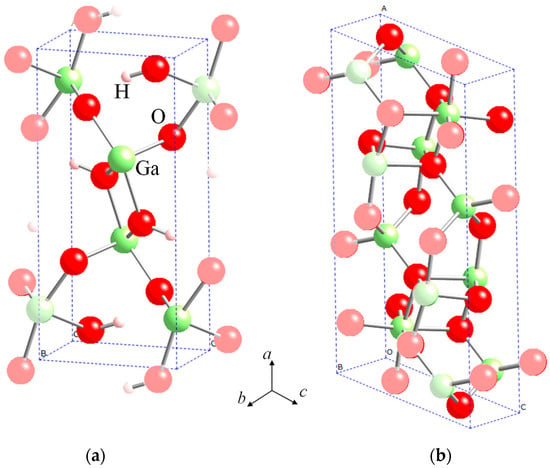
Figure 1
Open AccessCommunication
Size-Controlled ZnO Nanoparticles Synthesized with Thioacetamide and Formation of ZnS Quantum Dots
by
Ju-Seong Kim, Jonghyun Choi and Won Kook Choi
Electron. Mater. 2023, 4(4), 139-147; https://doi.org/10.3390/electronicmat4040012 - 12 Oct 2023
Abstract
►▼
Show Figures
In this work, we report the first attempt to investigate the dependence of thioacetamide (TAA) on the size of ZnO nanoparticles (NPs) in forming ZnS nanostructures from ZnO. Size-controlled B(blue)_, G(green)_, and Y(yellow)_ZnO quantum dots (QDs) and NC (nanocrystalline)_ZnO NPs were synthesized using
[...] Read more.
In this work, we report the first attempt to investigate the dependence of thioacetamide (TAA) on the size of ZnO nanoparticles (NPs) in forming ZnS nanostructures from ZnO. Size-controlled B(blue)_, G(green)_, and Y(yellow)_ZnO quantum dots (QDs) and NC (nanocrystalline)_ZnO NPs were synthesized using a sol–gel process and a hydrothermal method, respectively, and then reacted with an ethanolic TAA solution as a sulfur source. ZnO QDs/NPs began to decompose into ZnS QDs through a reaction with TAA for 5~10 min, so rather than forming a composite of ZnO/ZnS, ZnO QDs and ZnS QDs were separated and remained in a mixed state. At last, ZnO QDs/NPs were completely decomposed into ZnS QDs after a reaction with TAA for 1 h irrespective of the size of ZnO QDs up to ~50 nm. All results indicate that ZnS formation is due to direct crystal growth and/or the chemical conversion of ZnO to ZnS.
Full article
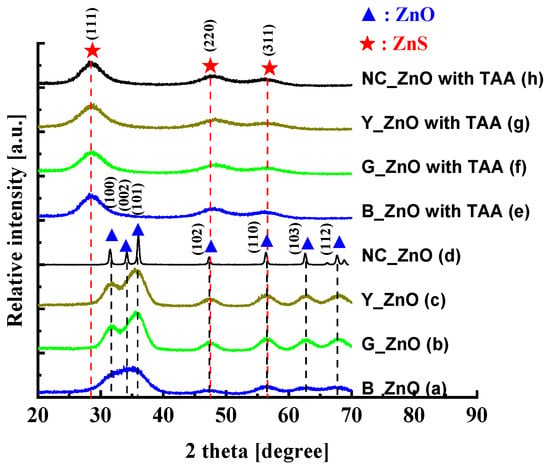
Figure 1
Open AccessEditorial
Inorganic Semiconductors in Electronic Applications
by
Wojciech Pisula
Electron. Mater. 2023, 4(3), 136-138; https://doi.org/10.3390/electronicmat4030011 - 21 Sep 2023
Abstract
Inorganic semiconductors have a wide range of applications in various fields, including electronics, optoelectronics, photovoltaics, and even catalysis [...]
Full article
Open AccessFeature PaperArticle
Enhancing Light Harvesting in Dye-Sensitized Solar Cells through Mesoporous Silica Nanoparticle-Mediated Diffuse Scattering Back Reflectors
by
Jeffrie Fina, Navdeep Kaur, Chen-Yu Chang, Cheng-Yu Lai and Daniela R. Radu
Electron. Mater. 2023, 4(3), 124-135; https://doi.org/10.3390/electronicmat4030010 - 30 Aug 2023
Cited by 2
Abstract
►▼
Show Figures
Dye-sensitized solar cells (DSSCs) hold unique promise in solar photovoltaics owing to their low-cost fabrication and high efficiency in ambient conditions. However, to improve their commercial viability, effective, and low-cost methods must be employed to enhance their light harvesting capabilities, and hence photovoltaic
[...] Read more.
Dye-sensitized solar cells (DSSCs) hold unique promise in solar photovoltaics owing to their low-cost fabrication and high efficiency in ambient conditions. However, to improve their commercial viability, effective, and low-cost methods must be employed to enhance their light harvesting capabilities, and hence photovoltaic (PV) performance. Improving the absorption of incoming light is a critical strategy for maximizing solar cell efficiency while overcoming material limitations. Mesoporous silica nanoparticles (MSNs) were employed herein as a reflective layer on the back of transparent counter electrodes. Chemically synthesized MSNs were applied to DSSCs via bar coating as a facile fabrication step compatible with roll-to-roll manufacturing. The MSNs diffusely scatter the unused incident light transmitted through the DSSCs back into the photoactive layers, increasing the absorption of light by N719 dye molecules. This resulted in a 20% increase in power conversion efficiency (PCE), from 5.57% in a standard cell to 6.68% with the addition of MSNs. The improved performance is attributed to an increase in photon absorption which led to the generation of a higher number of charge carriers, thus increasing the current density in DSSCs. These results were corroborated with electrochemical impedance spectroscopy (EIS), which showed improved charge transport kinetics. The use of MSNs as reflectors proved to be an effective practical method for enhancing the performance of thin film solar cells. Due to silica’s abundance and biocompatibility, MSNs are an attractive material for meeting the low-cost and non-toxic requirements for commercially viable integrated PVs.
Full article
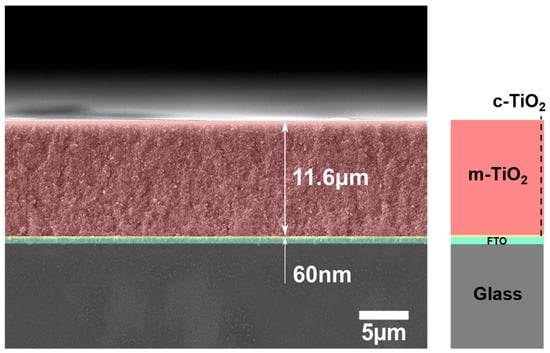
Figure 1
Open AccessArticle
Effect of the RF Power of PECVD on the Crystalline Fractions of Microcrystalline Silicon (μc-Si:H) Films and Their Structural, Optical, and Electronic Properties
by
Mario Moreno, Arturo Torres-Sánchez, Pedro Rosales, Alfredo Morales, Alfonso Torres, Javier Flores, Luis Hernández, Carlos Zúñiga, Carlos Ascencio and Alba Arenas
Electron. Mater. 2023, 4(3), 110-123; https://doi.org/10.3390/electronicmat4030009 - 22 Jun 2023
Abstract
►▼
Show Figures
In this work, we report on the deposition of microcrystalline silicon (µc-Si:H) films produced from silane (SiH4), hydrogen (H2), and argon (Ar) mixtures using the plasma-enhanced chemical vapor deposition (PECVD) technique at 200 °C. Particularly, we studied the effect
[...] Read more.
In this work, we report on the deposition of microcrystalline silicon (µc-Si:H) films produced from silane (SiH4), hydrogen (H2), and argon (Ar) mixtures using the plasma-enhanced chemical vapor deposition (PECVD) technique at 200 °C. Particularly, we studied the effect of RF power on the crystalline fraction (XC) of the deposited films, and we have correlated the XC with their optical, electrical, and structural characteristics. Different types of characterization were performed in the µc-Si:H film series. We used several techniques, such as Raman scattering spectroscopy, Fourier transform infrared spectroscopy (FTIR), atomic force microscopy (AFM), field emission scanning electron microscopy (FE-SEM), and transmission electron microscopy (TEM), among others. Our results show that RF power had a strong effect on the XC of the films, and there is an optimal value for producing films with the largest XC.
Full article
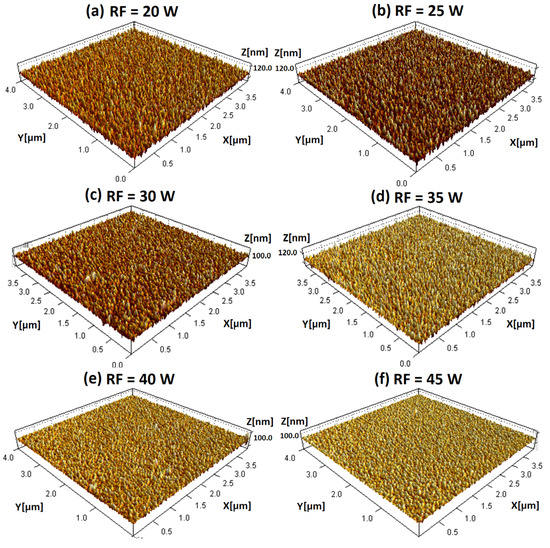
Figure 1
Open AccessArticle
Exploring the Impact of Fe-Implantation on the Electrical Characteristics of Al/p-Si Schottky Barrier Diodes
by
Joseph Oluwadamilola Bodunrin, Duke Ateyh Oeba and Sabata Jonas Moloi
Electron. Mater. 2023, 4(2), 95-109; https://doi.org/10.3390/electronicmat4020008 - 16 Jun 2023
Abstract
►▼
Show Figures
The effects of Fe-implantation on the electrical characteristics of Au/p-Si Schottky barrier diodes (SBDs) were studied using current–voltage (I–V) and capacitance–voltage (C–V) techniques. The Rutherford Backscattering Spectrometry (RBS) and Energy Dispersive
[...] Read more.
The effects of Fe-implantation on the electrical characteristics of Au/p-Si Schottky barrier diodes (SBDs) were studied using current–voltage (I–V) and capacitance–voltage (C–V) techniques. The Rutherford Backscattering Spectrometry (RBS) and Energy Dispersive Spectroscopy (EDS) results showed that Fe ions are well implanted and present in the Fe-implanted Si material. The acquired results from I–V and C–V analysis showed that the diodes were well fabricated, and Fe-implantation changed the normal diode’s I–V behaviour from typical exponential to ohmic. The ohmic behaviour was described in terms of the defect levels induced by Fe in the middle of the band gap of Si. The conduction mechanism for both forward and reverse currents was presented, and the effect of Fe-implantation on the conduction mechanisms was investigated. The C–V results show that Fe generates a high density of minority carriers in p-Si, which agreed with the increase in reverse current observed in the I–V results. The diode parameters in terms of saturation current, ideality factor, Schottky barrier height, doping density, and space charge region (SCR) width were used to investigate the effect of Fe in p-Si based diode. Owing to the observed changes, which were analogous to those induced by dopants that improve the radiation hardness of silicon, it was safe to say that Fe can also assist in the quest to improve the radiation hardness of silicon using the defect-engineering method.
Full article

Figure 1
Open AccessArticle
A Neural Network to Decipher Organic Electrochemical Transistors’ Multivariate Responses for Cation Recognition
by
Sébastien Pecqueur, Dominique Vuillaume, Željko Crljen, Ivor Lončarić and Vinko Zlatić
Electron. Mater. 2023, 4(2), 80-94; https://doi.org/10.3390/electronicmat4020007 - 18 May 2023
Cited by 2
Abstract
►▼
Show Figures
Extracting relevant data from real-world experiments is often challenging with intrinsic materials and device property dispersion, such as in organic electronics. However, multivariate data analysis can often be a mean to circumvent this and to extract more information when larger datasets are used
[...] Read more.
Extracting relevant data from real-world experiments is often challenging with intrinsic materials and device property dispersion, such as in organic electronics. However, multivariate data analysis can often be a mean to circumvent this and to extract more information when larger datasets are used with learning algorithms instead of physical models. Here, we report on identifying relevant information descriptors for organic electrochemical transistors (OECTs) to classify aqueous electrolytes by ionic composition. Applying periodical gate pulses at different voltage magnitudes, we extracted a reduced number of nonredundant descriptors from the rich drain-current dynamics, which provide enough information to cluster electrochemical data by principal component analysis between Ca2+-, K+-, and Na+-rich electrolytes. With six current values obtained at the appropriate time domain of the device charge/discharge transient, one can identify the cationic identity of a locally probed transient current with only a single micrometric device. Applied to OECT-based neural sensors, this analysis demonstrates the capability for a single nonselective device to retrieve the rich ionic identity of neural activity at the scale of each neuron individually when learning algorithms are applied to the device physics.
Full article
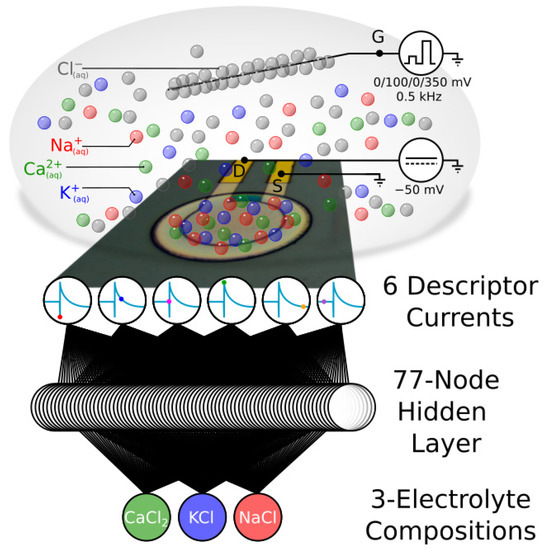
Figure 1
Open AccessArticle
Modelling of Low-Voltage Varistors’ Responses under Slow-Front Overvoltages
by
Lutendo Muremi, Pitshou N. Bokoro and Wesley Doorsamy
Electron. Mater. 2023, 4(2), 62-79; https://doi.org/10.3390/electronicmat4020006 - 09 May 2023
Abstract
In this study, commercially low-voltage MOVs are exposed to switching surges to analyse and model the relationship between the number of surges and the MOV grain barrier height response. Repeated slow-front overvoltage transients are used to degrade the protective qualities of metal oxide
[...] Read more.
In this study, commercially low-voltage MOVs are exposed to switching surges to analyse and model the relationship between the number of surges and the MOV grain barrier height response. Repeated slow-front overvoltage transients are used to degrade the protective qualities of metal oxide surge arrester devices, affecting their reliability and stability. A total of 360 MOVs with similar specifications from three different manufacturers are degraded under switching surges at a constant temperature of 60 °C. The reference voltage and C-V characteristics of MOVs are measured before and after the degradation process to analyse the MOVs’ conditions. Grain barrier heights are determined from the C-V characteristics curve. An F-statistical analysis is then applied to analyse the effects of number of surges on the grain barrier height. The T-test is used to assess the statistical difference between the tested groups. Linear regression analysis is then applied to model the relationship between the number of surges and MOV grain barrier height. The results obtained show that the number of surges has a significant impact on grain barrier height. MOV grain barrier height is found to decrease as the number of surges applied increases. Regression models obtained for the tested MOV groups across all three manufacturers agree and indicate that the reduction in grain barrier height results from an increased number of surges. Regression coefficients of a developed model indicate that for one surge applied, the MOV grain barrier height decreases by 0.024, 0.055, and 0.033 eV/cm for manufacturers X, Y, and Z, respectively. Therefore, there is a linear relationship between grain barrier height and the number of applied switching surges.
Full article
(This article belongs to the Special Issue Metal Oxide Semiconductors for Electronic Applications)
►▼
Show Figures
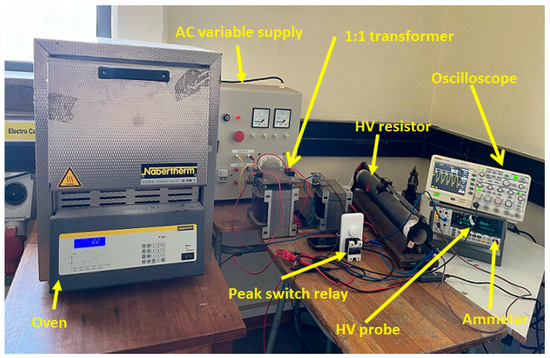
Figure 1
Open AccessPerspective
On-Surface Synthesis and Applications of 2D Covalent Organic Framework Nanosheets
by
Jinwei Fan, Zhuoqun Wang, Haoge Cheng, Dingguan Wang and Andrew Thye Shen Wee
Electron. Mater. 2023, 4(2), 49-61; https://doi.org/10.3390/electronicmat4020005 - 12 Apr 2023
Cited by 1
Abstract
Covalent organic framework nanosheets (COF nanosheets) are two-dimensional crystalline porous polymers with in-plane covalent bonds and out-of-plane Van der Waals forces. Owing to the customizable structure, chemical modification, and ultra-high porosity, COF nanosheets show many fascinating properties unique to traditional two-dimensional materials, and
[...] Read more.
Covalent organic framework nanosheets (COF nanosheets) are two-dimensional crystalline porous polymers with in-plane covalent bonds and out-of-plane Van der Waals forces. Owing to the customizable structure, chemical modification, and ultra-high porosity, COF nanosheets show many fascinating properties unique to traditional two-dimensional materials, and have shown potential applications in gas separation, sensors, electronic, and optoelectronic devices. This minireview aims to illustrate recent progress on two-dimensional covalent organic framework nanosheets, from two aspects of on-surface synthesis and potential applications. We first review the synthesis of COF nanosheets at the gas–solid interface. On-surface synthesis under ultrahigh vacuum and on-surface synthesis under vapor are highlighted. In addition, we also review the liquid–solid interface synthesis of COF nanosheets at various substrates, i.e., both crystalline and amorphous substrates. Beyond the synthesis, we highlight state-of-the-art applications of the COF nanosheets, particularly in charge transport, chemical sensors, and gas separation.
Full article
(This article belongs to the Special Issue Feature Papers of Electronic Materials II)
►▼
Show Figures

Figure 1
Open AccessArticle
Chlorine Adsorption on TiO2(110)/Water Interface: Nonadiabatic Molecular Dynamics Simulations for Photocatalytic Water Splitting
by
Yin-Pai Lin, Dmitry Bocharov, Inta Isakoviča, Vladimir Pankratov, Aleksandr A. Popov, Anatoli I. Popov and Sergei Piskunov
Electron. Mater. 2023, 4(1), 33-48; https://doi.org/10.3390/electronicmat4010004 - 07 Mar 2023
Cited by 4
Abstract
Chloride is one of the most abundant ions in sea water, which is more available than fresh water. Due to lack of H
Chloride is one of the most abundant ions in sea water, which is more available than fresh water. Due to lack of H
(This article belongs to the Special Issue Feature Papers of Electronic Materials II)
►▼
Show Figures
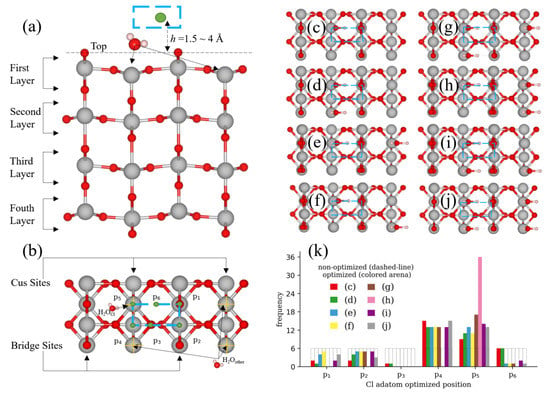
Figure 1
Open AccessReview
Recent Research Process of Carbon Engineering on Na3V2(PO4)3 for Sodium-Ion Battery Cathodes: A Mini Review
by
Yaxuan He and Haibo Li
Electron. Mater. 2023, 4(1), 17-32; https://doi.org/10.3390/electronicmat4010003 - 31 Jan 2023
Cited by 2
Abstract
Owing to the 3D open framework, excellent structural stability, and high ionic conductivity, NASICON-type compounds are extensively employed as promising cathode materials for sodium-ion batteries (SIBs). Being one of the representative NASICON-type compounds, the Na3V2(PO4)3 delivers
[...] Read more.
Owing to the 3D open framework, excellent structural stability, and high ionic conductivity, NASICON-type compounds are extensively employed as promising cathode materials for sodium-ion batteries (SIBs). Being one of the representative NASICON-type compounds, the Na3V2(PO4)3 delivers high theoretical capacity with an operating voltage exceeding 3.3 V, enabling it to be a good candidate for SIBs. Unfortunately, the Na3V2(PO4)3 suffers from low electronic conductivity. In this work, we briefly review the recent research progress on novel carbon engineering strategies to enhance the electronic conductivity of Na3V2(PO4)3. Moreover, we will point out the issues relating to the development of NASICON cathode materials and put forward some suggestions.
Full article
(This article belongs to the Special Issue Feature Papers of Electronic Materials II)
►▼
Show Figures
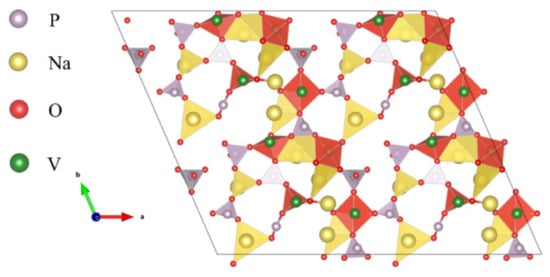
Figure 1
Open AccessEditorial
Acknowledgment to the Reviewers of Electronic Materials in 2022
by
Electronic Materials Editorial Office
Electron. Mater. 2023, 4(1), 15-16; https://doi.org/10.3390/electronicmat4010002 - 18 Jan 2023
Abstract
High-quality academic publishing is built on rigorous peer review [...]
Full article
Open AccessArticle
Study of Electronic Bands of Diatomic Molecules for the Evaluation of Toxicity of Green Crackers Using LIBS Coupled with Chemometric Method
by
Darpan Dubey, Rohit Kumar, Abhishek Dwivedi and Awadhesh Kumar Rai
Electron. Mater. 2023, 4(1), 1-14; https://doi.org/10.3390/electronicmat4010001 - 27 Dec 2022
Cited by 1
Abstract
Laser-induced Breakdown Spectroscopy (LIBS) is primarily an atomic emission spectroscopic method based on analyzing the spectral lines of elements in the laser-induced plasma. However, when the plasma cools down after its ignition, i.e., when one collects the emissions from the plasma after a
[...] Read more.
Laser-induced Breakdown Spectroscopy (LIBS) is primarily an atomic emission spectroscopic method based on analyzing the spectral lines of elements in the laser-induced plasma. However, when the plasma cools down after its ignition, i.e., when one collects the emissions from the plasma after a certain interval of time/gate delay (~1 micro-second), the signature of the electronic bands of diatomic molecules is also observed along with ionic/atomic emission lines. The present manuscript reports the evaluation of toxicity/pollutants in green crackers based on the intensity of the electronic bands of the Aluminum Oxide (AlO), calcium oxide (CaO), and strontium oxide (SrO) molecules observed in the laser-induced plasma of the firecrackers. LIBS spectra of the green crackers show the presence of spectral lines of the heavy/toxic elements such as Al, Ca, Sr, Cr, Cu, and Ba, along with the electronic bands of the AlO, CaO, and SrO. Fourier Transform Infra-Red Spectroscopy (FTIR) has been used to validate the LIBS results and confirm the molecules in these crackers. The concentration of toxic elements in green crackers such as Aluminum (Al), Copper (Cu), and Chromium (Cr) has also been estimated using the Partial Least Square Regression method (PLSR) to evaluate and compare the extent of the toxicity of green crackers.
Full article
(This article belongs to the Topic Characterization of Electrochemical Materials)
►▼
Show Figures
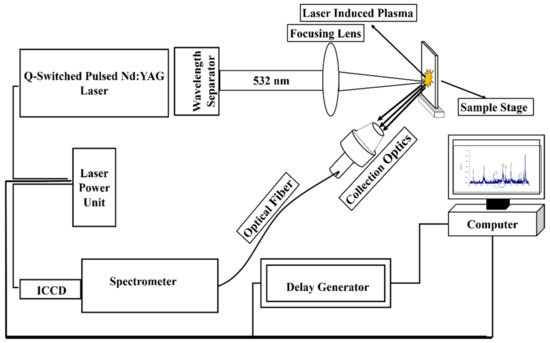
Figure 1
Open AccessArticle
Stress-Relaxed AlN-Buffer-Oriented GaN-Nano-Obelisks-Based High-Performance UV Photodetector
by
Pargam Vashishtha, Pukhraj Prajapat, Lalit Goswami, Aditya Yadav, Akhilesh Pandey and Govind Gupta
Electron. Mater. 2022, 3(4), 357-367; https://doi.org/10.3390/electronicmat3040029 - 09 Dec 2022
Cited by 17
Abstract
Epitaxial GaN nanostructures are developed, and the influence of the AlN buffer layer (temperature modulation) on material characteristics and optoelectronic device application is assessed. The AlN buffer layer was grown on a Si (111) substrate at varying temperatures (770–830 °C), followed by GaN
[...] Read more.
Epitaxial GaN nanostructures are developed, and the influence of the AlN buffer layer (temperature modulation) on material characteristics and optoelectronic device application is assessed. The AlN buffer layer was grown on a Si (111) substrate at varying temperatures (770–830 °C), followed by GaN growth using plasma-assisted molecular beam epitaxy. The investigation revealed that the comparatively lower temperature AlN buffer layer was responsible for stress and lattice strain relaxation and was realized as the GaN nano-obelisk structures. Contrarily, the increased temperature of the AlN growth led to the formation of GaN nanopyramidal and nanowax/wane structures. These grown GaN/AlN/Si heterostructures were utilized to develop photodetectors in a metal–semiconductor–metal geometry format. The performance of these fabricated optoelectronic devices was examined under ultraviolet illumination (UVA), where the GaN nano-obelisks-based device attained the highest responsivity of 118 AW−1. Under UVA (325 nm) illumination, the designed device exhibited a high detectivity of 1 × 1010 Jones, noise equivalent power of 1 × 10−12 WHz−1/2, and external quantum efficiency of 45,000%. The analysis revealed that the quality of the AlN buffer layer significantly improved the optoelectronic performance of the device.
Full article
(This article belongs to the Special Issue Feature Papers of Electronic Materials II)
►▼
Show Figures
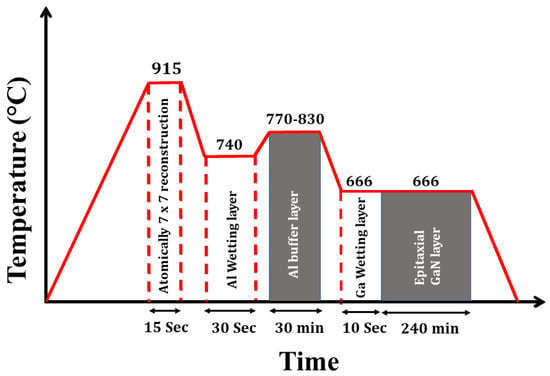
Figure 1
Open AccessFeature PaperArticle
Indirect Evaluation of the Electrocaloric Effect in PbZrTiO3 (20/80)-Based Epitaxial Thin Film Structures
by
Georgia A. Boni, Lucian D. Filip, Cristian Radu, Cristina Chirila, Iuliana Pasuk, Mihaela Botea, Ioana Pintilie and Lucian Pintilie
Electron. Mater. 2022, 3(4), 344-356; https://doi.org/10.3390/electronicmat3040028 - 01 Nov 2022
Abstract
Electrocaloric effect is the adiabatic temperature change in a dielectric material when an electric field is applied or removed, and it can be considered as an alternative refrigeration method. Materials with ferroelectric order exhibit large temperature variations in the vicinity of a phase
[...] Read more.
Electrocaloric effect is the adiabatic temperature change in a dielectric material when an electric field is applied or removed, and it can be considered as an alternative refrigeration method. Materials with ferroelectric order exhibit large temperature variations in the vicinity of a phase transition, while antiferroelectrics and relaxors may exhibit a negative electrocaloric effect. In this study, the temperature variation in polarization was investigated for epitaxial ferroelectric thin film structures based on PbZrTiO3 materials in simple or complex multilayered structures. We propose the intriguing possibility of a giant negative electrocaloric effect (ΔT = −3.7 K at room temperature and ΔT = −5.5 K at 370 K) in a simple epitaxial Pb(ZrTi)O3 capacitor. Furthermore, it was shown that abnormal temperature variation in polarization is dependent on the non-FE component introduced in a multilayered structure. No significant variation in polarization with temperature was obtained for PZT/STON multilayered structures around room temperature. However, for PZT/BST or PZT/Nb2O5 multilayers, an abnormal temperature variation in polarization was revealed, which was similar to a simple PZT layer. The giant and negative ∆T values were attributed to internal fields and defects formed due to the large depolarization fields when the high polarization of the FE component was not fully compensated either by the electrodes or by the interface with an insulator layer. The presented results make Pb(ZrTi)O3-based structures promising for cooling applications operating near room temperature.
Full article
(This article belongs to the Special Issue Electronic Processes in Ferroelectrics)
►▼
Show Figures

Figure 1
Highly Accessed Articles
Latest Books
E-Mail Alert
News
Topics
Topic in
Applied Sciences, Crystals, Electronic Materials, Nanomaterials, Polymers
Optoelectronic Materials, 2nd Volume
Topic Editors: Tzi-yi Wu, Ali Belarouci, Regis OrobtchoukDeadline: 30 September 2024
Topic in
Applied Sciences, C, Electronic Materials, Nanomaterials, Polymers
Application of Graphene-Based Materials, 2nd Volume
Topic Editors: Marcelo Antunes, Chih-Wei ChiuDeadline: 30 October 2024

Conferences
Special Issues
Special Issue in
Electronic Materials
Metal Oxide Semiconductors for Electronic Applications
Guest Editors: Ana Rovisco, Jorge Martins, Asal KiazadehDeadline: 30 June 2024








